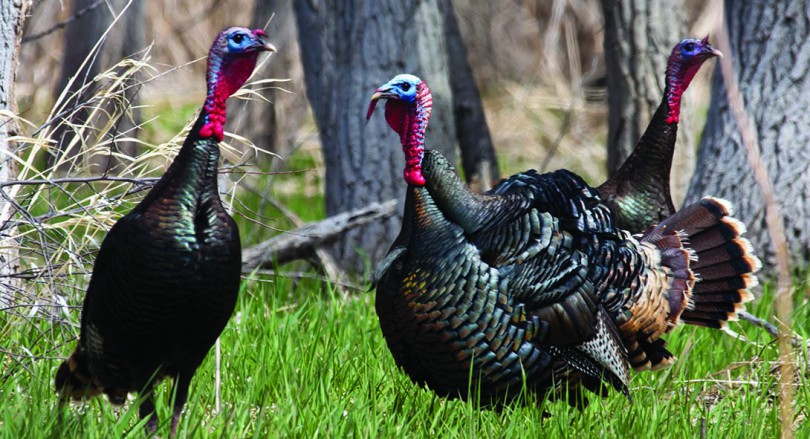By Dennis Smith
A reader emailed me a while back asking for advice on turkey hunting in Colorado. Specifically, he wanted to know if there were any decent sized flocks of wild turkeys in the hills or farms near Fort Collins. I had to confess that I never hunted turkeys in Colorado and that, in fact, I never hunted turkeys at all until last April when the boys persuaded me to go with them to photograph their archery hunt. (Secretly, I think they just wanted me to help with the food and motel bills, but that’s another story.)
They wanted to hunt the Platte River basin in eastern Colorado but failed to draw turkey tags for that area, so they hunted just across the state line in western Nebraska where there are lots of turkeys and my grandson could get an over-the-counter, nonresident, youth turkey tag for six bucks. The terrain is essentially the same in both places: fertile bottomlands thick with grasses, forbs and gobs of ground cover for nesting and feeding, and miles of giant cottonwood trees for roosting. Colorado, Nebraska: Makes no difference really, when it comes to hunting river bottom turkeys. Done right, it can be more fun than turning a wagon load of drunken monkeys loose in a day care center. Well, it was for us anyway.
The primary subspecies here is the Merriam’s, though the Rio Grande and hybrids are possible. Regardless, the hunting techniques are similar for both species. Ideally, you locate roosting birds in the evening and come back early in the morning to insert yourself between them and their likely daytime strutting and feeding grounds in hopes of calling a dominant male — sometimes called gobblers, toms or long beards — within bow or shotgun range.
Easier said than done. Luring a love-crazed tom turkey away from a flock of amorous hens at the height of mating season is like trying to drag a fourth-grader from an ice cream shop on an August afternoon. It can be done, but it can be hilariously exasperating, too.
Early one afternoon we were hidden in a makeshift blind of brush and camouflage netting, scratching out seductive yelps of a lonesome hen on a cedar box call. We were trying to draw in a big tom. One looked our way, but was obviously more interested in staying with his harem than chasing off after some wayward floozy.
Suddenly, three jakes (yearling males) came rushing in, all puffed up and pirouetting like a trio of barnyard peacocks. Acting goofier than a gang of pubescent freshman boys who sneaked into the senior prom, they fussed and strutted around our hen decoy just out of bow range, scared motherless, apparently, of getting too close to the beckoning temptress. Fifteen minutes later they finally wandered off, bragging to each other about their imaginary conquest. We collapsed on the ground laughing hysterically, then wiped our eyes, packed up our gear and headed back to the motel for an early dinner, laughing all the way.

